
The United States has an ambitious plan to get to population level immunity, but it doesn't have the vaccines to accomplish it (no less the buy in of Americans)
@WSJgraphic by @ErikBrynildsen @joshulick @TaylorUmlauf
@toddlindeman /1
@WSJgraphic by @ErikBrynildsen @joshulick @TaylorUmlauf
@toddlindeman /1
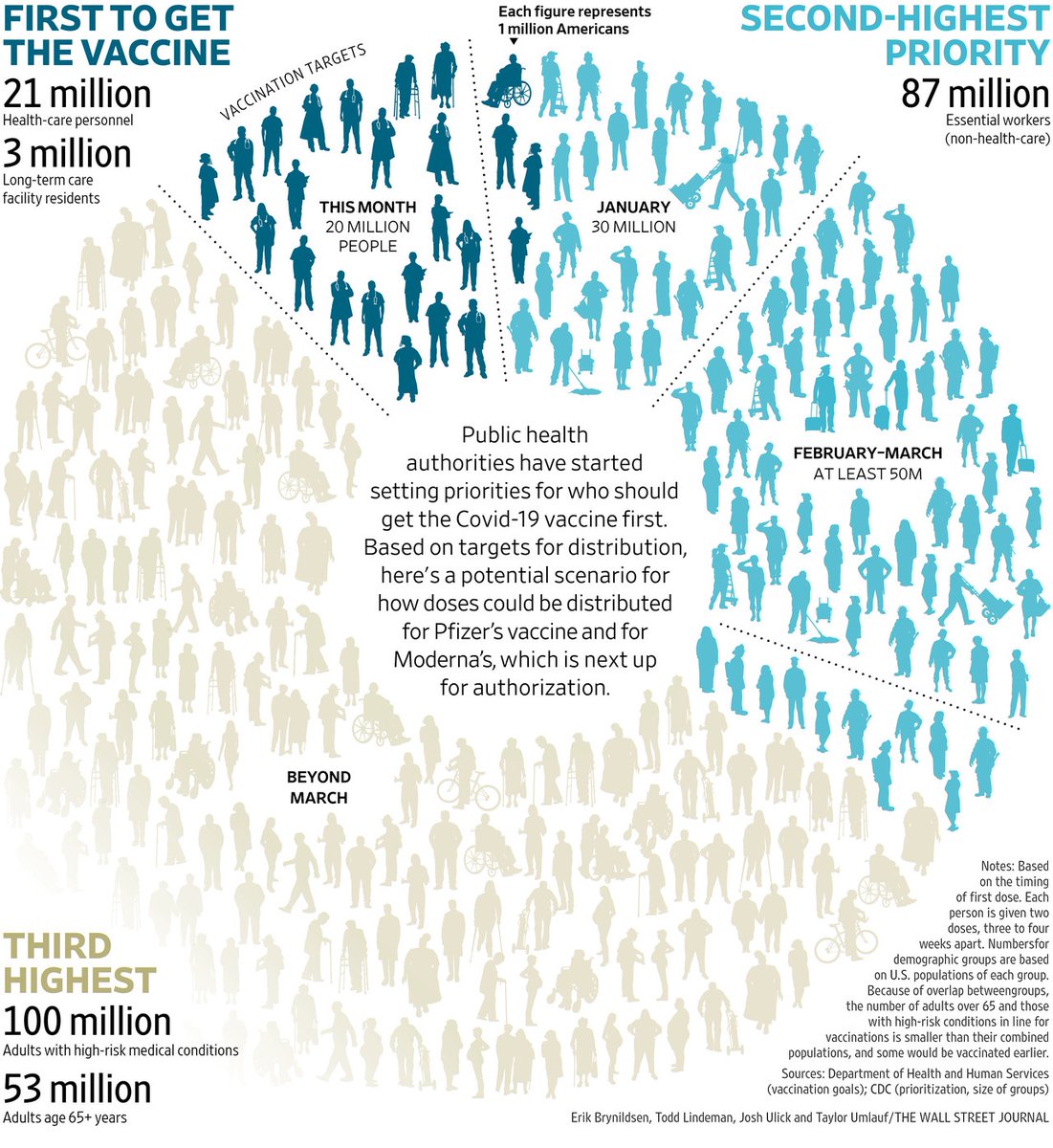
Before the vaccine problems with Sanofi-GSK (wrong dose) and Astra Zeneca/Oxford (? dose) the US was already short in covering its population
nature.com/articles/d4158… /2
nature.com/articles/d4158… /2
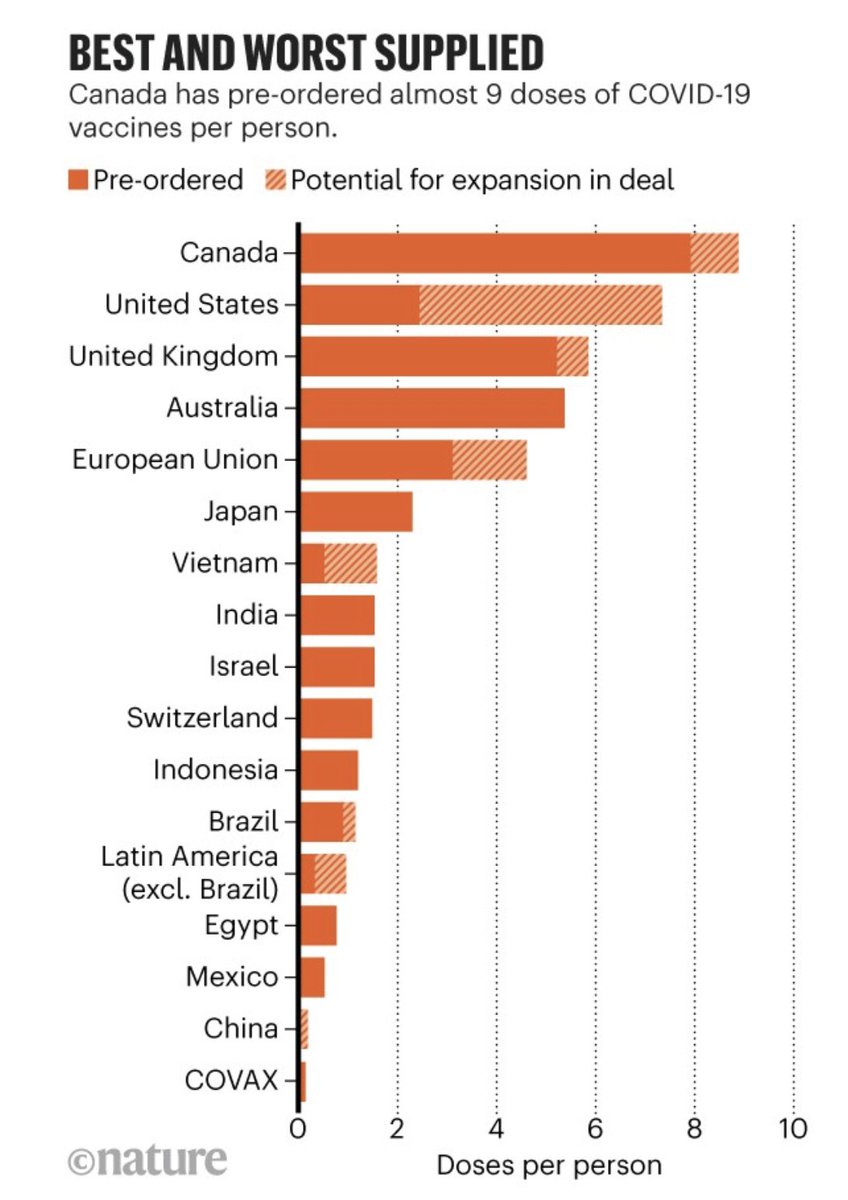
Here the US ranks #32 as compared with other countries
bloomberg.com/news/articles/… @bloomberg @ArmstrongDrew @tsrandall /3
bloomberg.com/news/articles/… @bloomberg @ArmstrongDrew @tsrandall /3
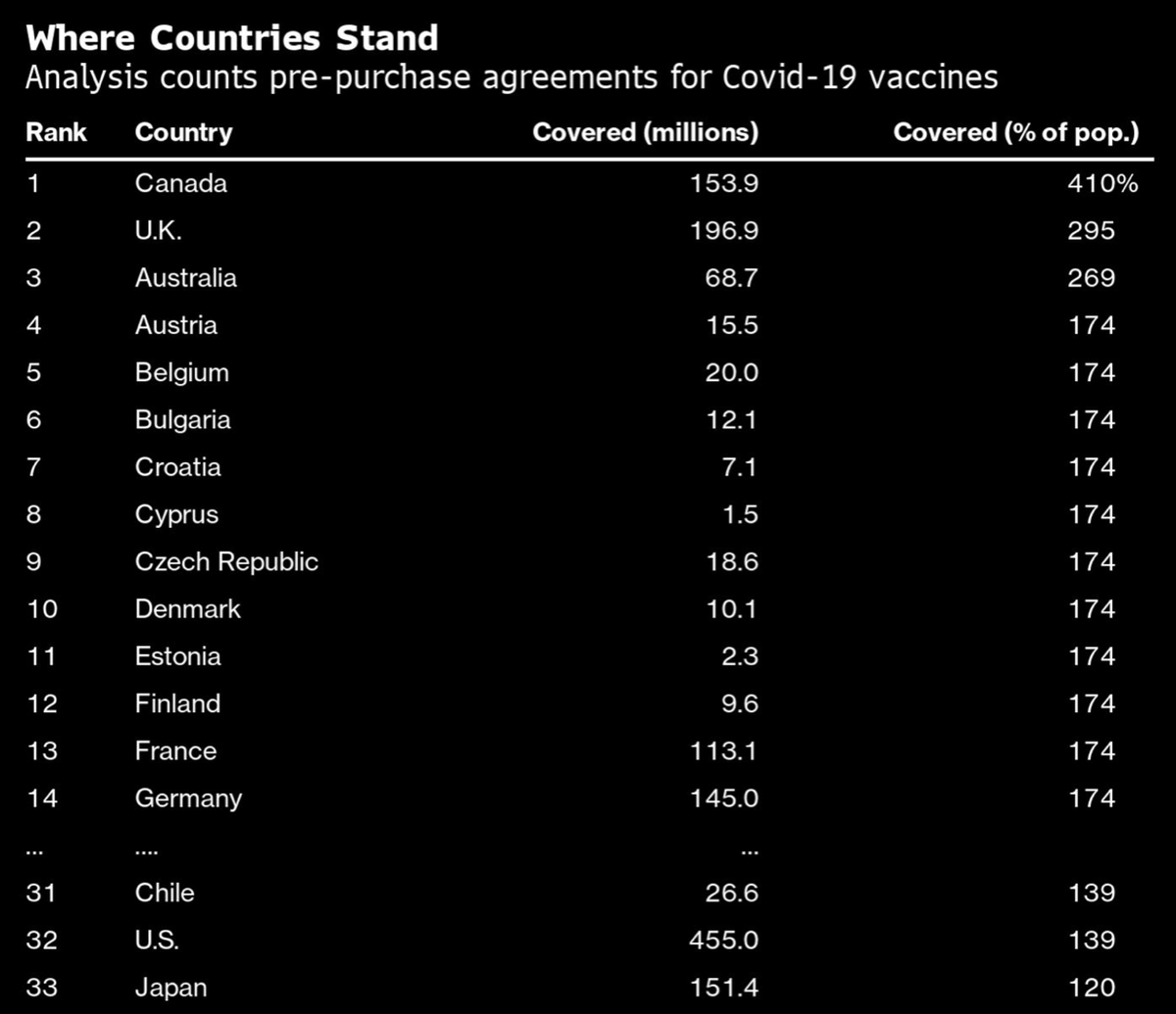
About ~40% of the US pre-order supply was dependent on Sanofi/GSK and Astra Zeneca/Oxford
ft.com/content/ac5e5e…
Sanofi issues statnews.com/2020/12/11/san… by @HelenBranswell @statnews /4
ft.com/content/ac5e5e…
Sanofi issues statnews.com/2020/12/11/san… by @HelenBranswell @statnews /4
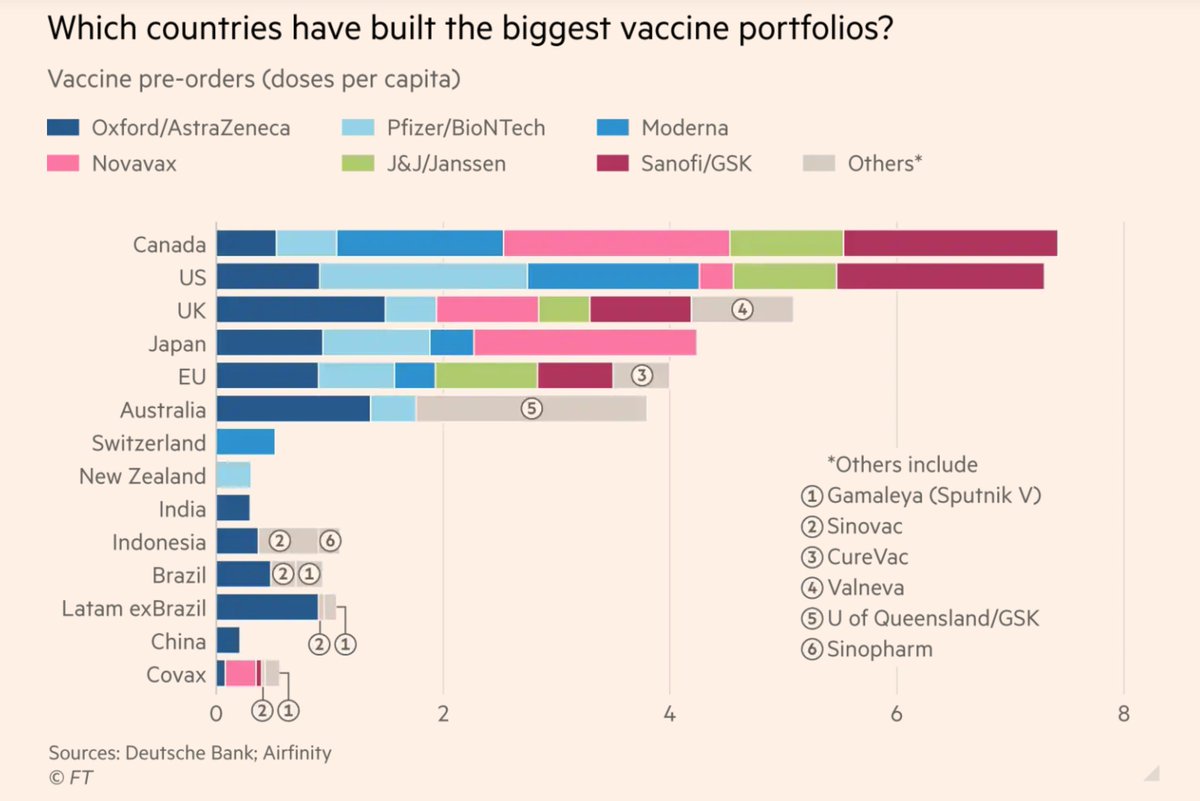
But, owing to the virus left unbridled, ~20%, more than 60 million Americans have now had a covid infection
economist.com/graphic-detail…
covid19-projections.com/path-to-herd-i…
by @youyanggu /5
economist.com/graphic-detail…
covid19-projections.com/path-to-herd-i…
by @youyanggu /5
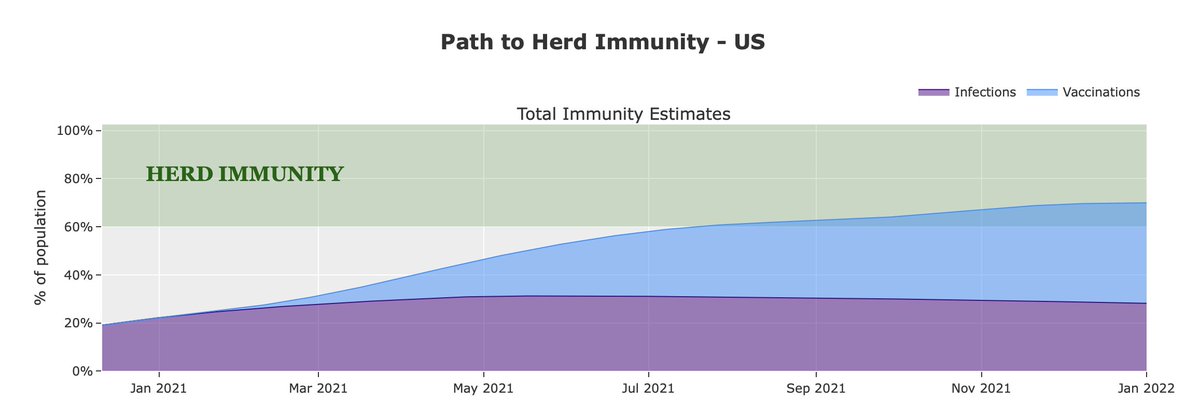
The vast majority of those infected would be expected to have a durable (>8-9 months) immune response
biorxiv.org/content/10.110… @profshanecrotty and colleagues
nytimes.com/2020/11/17/hea… @apoorva_nyc /6
biorxiv.org/content/10.110… @profshanecrotty and colleagues
nytimes.com/2020/11/17/hea… @apoorva_nyc /6
Eventually we'll have enough vaccines. But those with prior infections could be deferred. The problem is of the 60+ million people, confirmed infections were in 16 M. The rest were not tested or asymptomatic. What if we could accurately and rapidly determine serology status? /7
Modeling work by @bubar_kate @DanLarremore @CUBoulder @BioFrontiers and colleagues supports a much accelerated timeline if we prioritized vaccines for people who were seronegative (and other demographics)
medrxiv.org/content/10.110… /8
medrxiv.org/content/10.110… /8

The problem with determining serostatus is the time from infection and false positives from current tests. If we had a rapid, accurate neutralizing antibody test or surrogate metric to support durable immune response, we could do this well /9
Another point that ironically helps us is that the proportion of the 60+ million infected (and >1 million/5 days now) is that 30-50% (w/ @youyanggu) will likely not opt to get the vaccine /10 
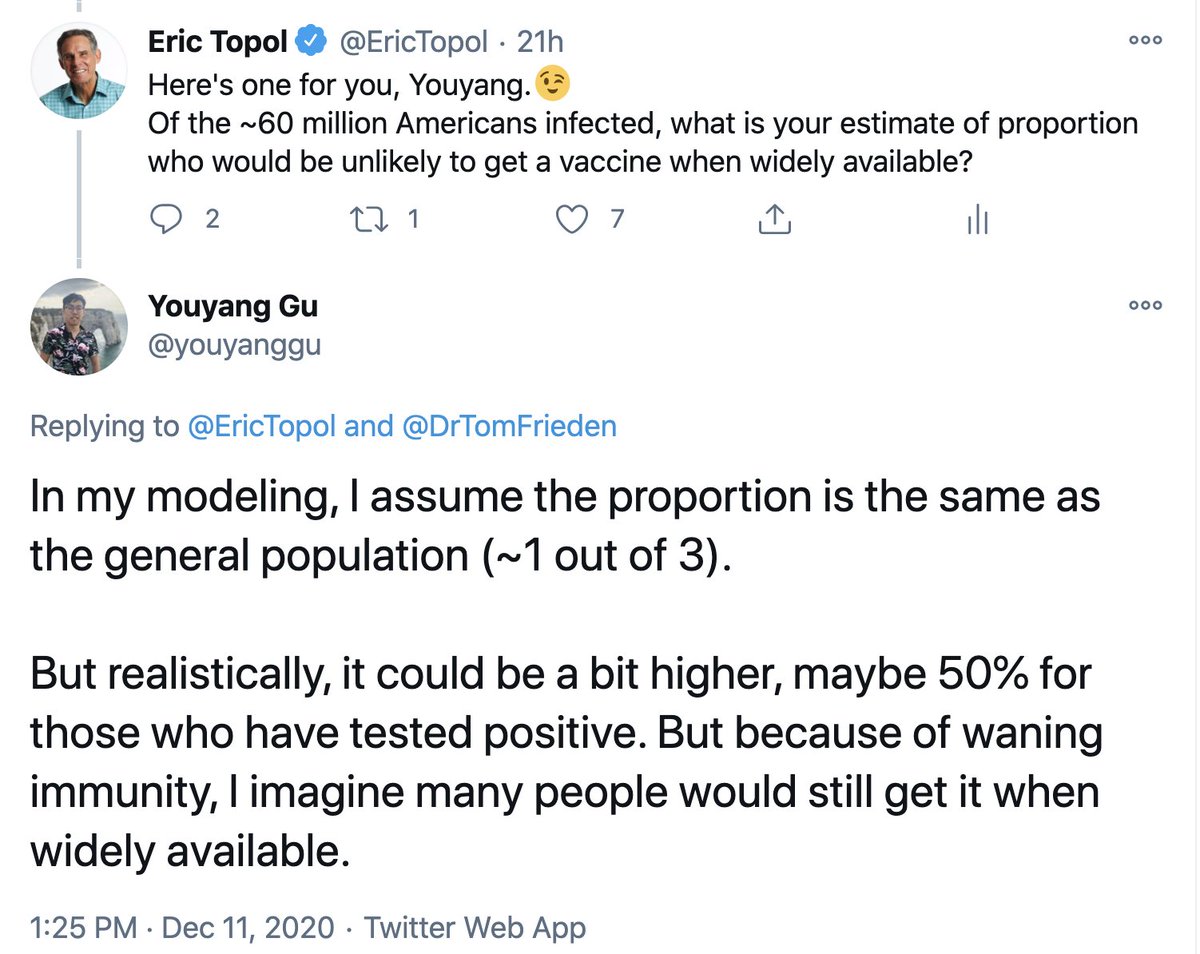
Given vaccine supply issues, we need a smart strategy to accelerate our trajectory to herd immunity. An unmet need is a test that could provide guidance, which could also be used to verify a salutary immune response to the vaccines. /11
• • •
Missing some Tweet in this thread? You can try to
force a refresh





















